Travelling towards the Black Sea, Beykoz is one of the faraway settlements on the Asian coast of the Bosphorus. Similar to the other districts on both sides of the strait, Beykoz was once a small village. It can be pleasantly reached by ferry if you have time to explore some of the less known tracks by tourists. This is also a place where you can make a stopover while cruising along the Bosphorus, all the way up to the Anadolu Kavağı, the last settlement on the Asian coast before reaching the Black Sea.
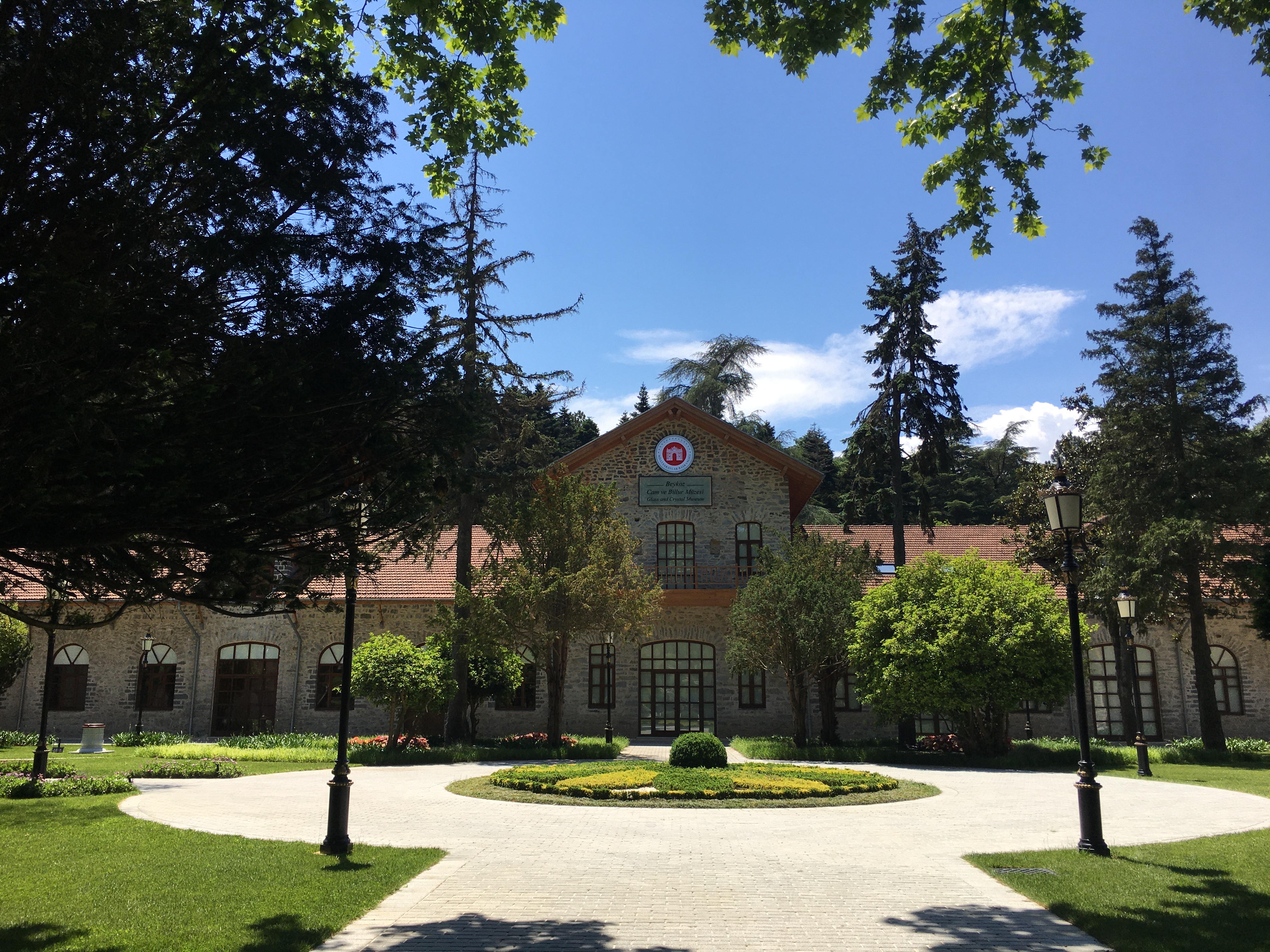
Apart from the fish restaurants and the Abraham Pasha Grove (a.k.a. Beykoz Korusu) which is one of the popular recreational locations for Istanbulites on weekends, Beykoz is now home to a beautiful museum. The recently inaugurated Beykoz Glass and Crystal Museum is a destination where you can enjoy culture, history and nature at the same time.
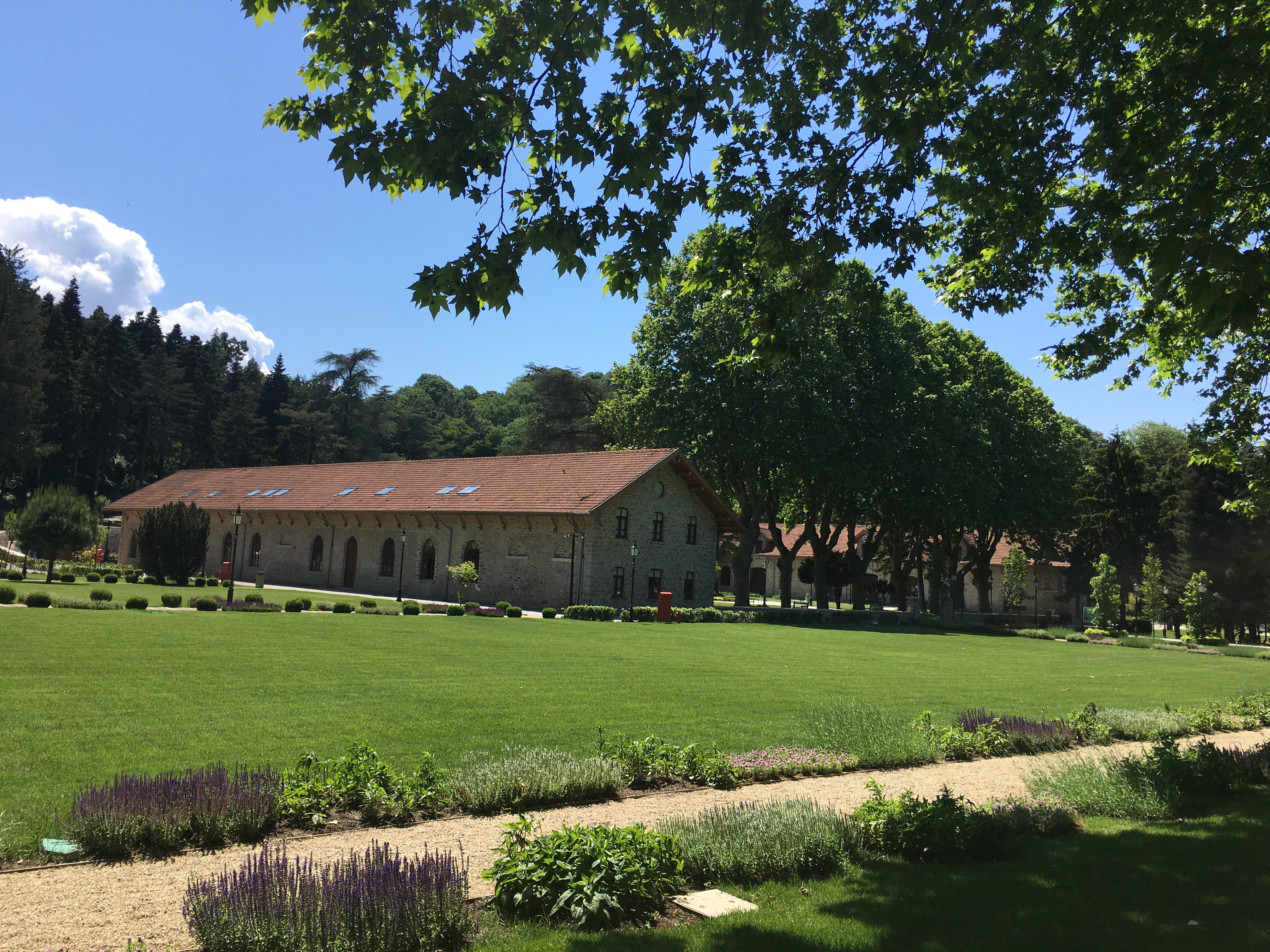
The location of the Beykoz Glass and Crystal Museum which houses the most beautiful examples of Ottoman glassware products was not selected haphazardly. Beykoz has been a centre of glass and crystal production for centuries in Istanbul. In fact, some of the people you will encounter in this area are most probably descendants of glassware workers of several generations. The Paşabahçe glass factory, which operated between 1935-2002, was also a continuation of this tradition of glass and crystal production in the area after the declaration of the Republic.
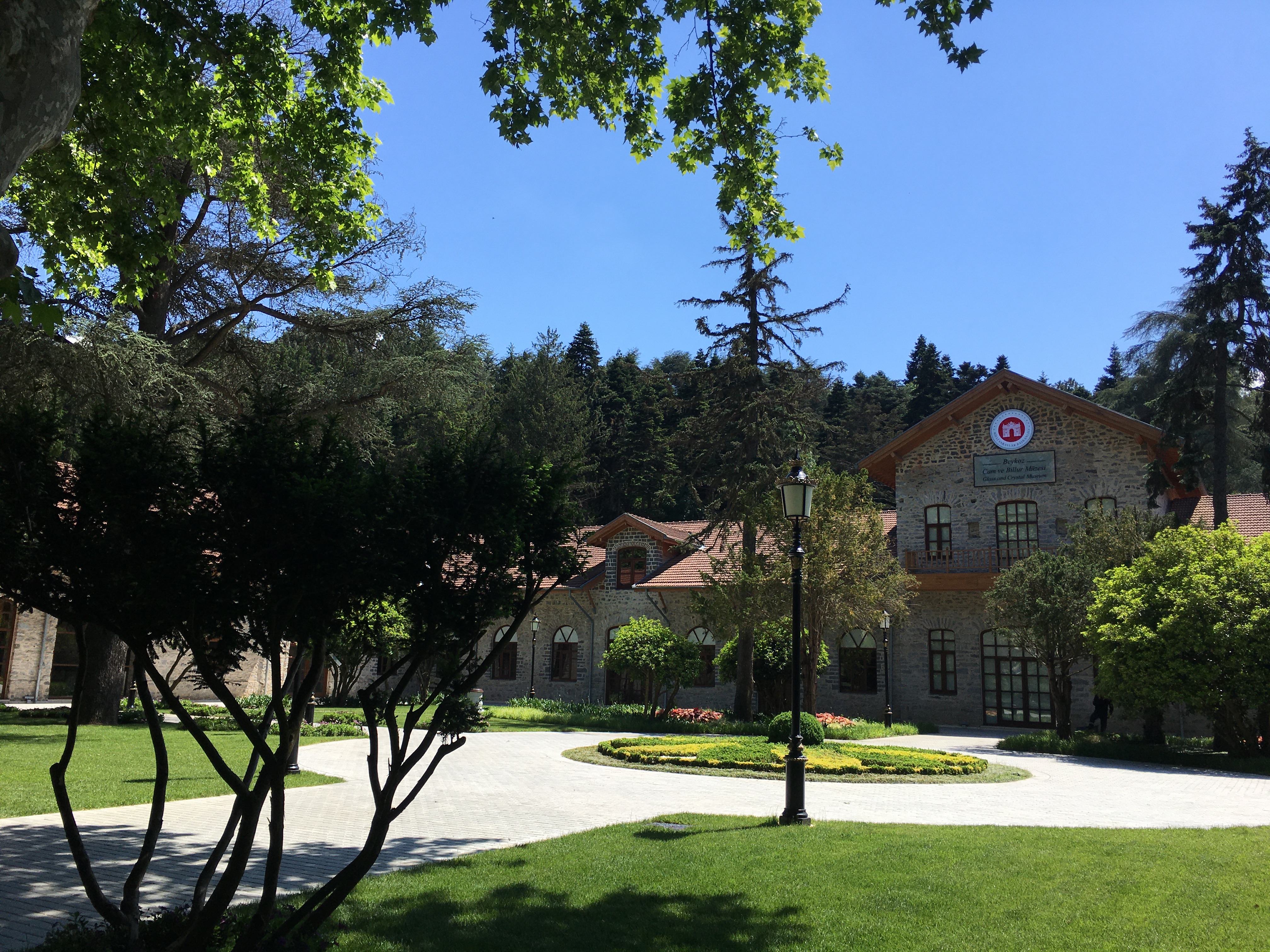
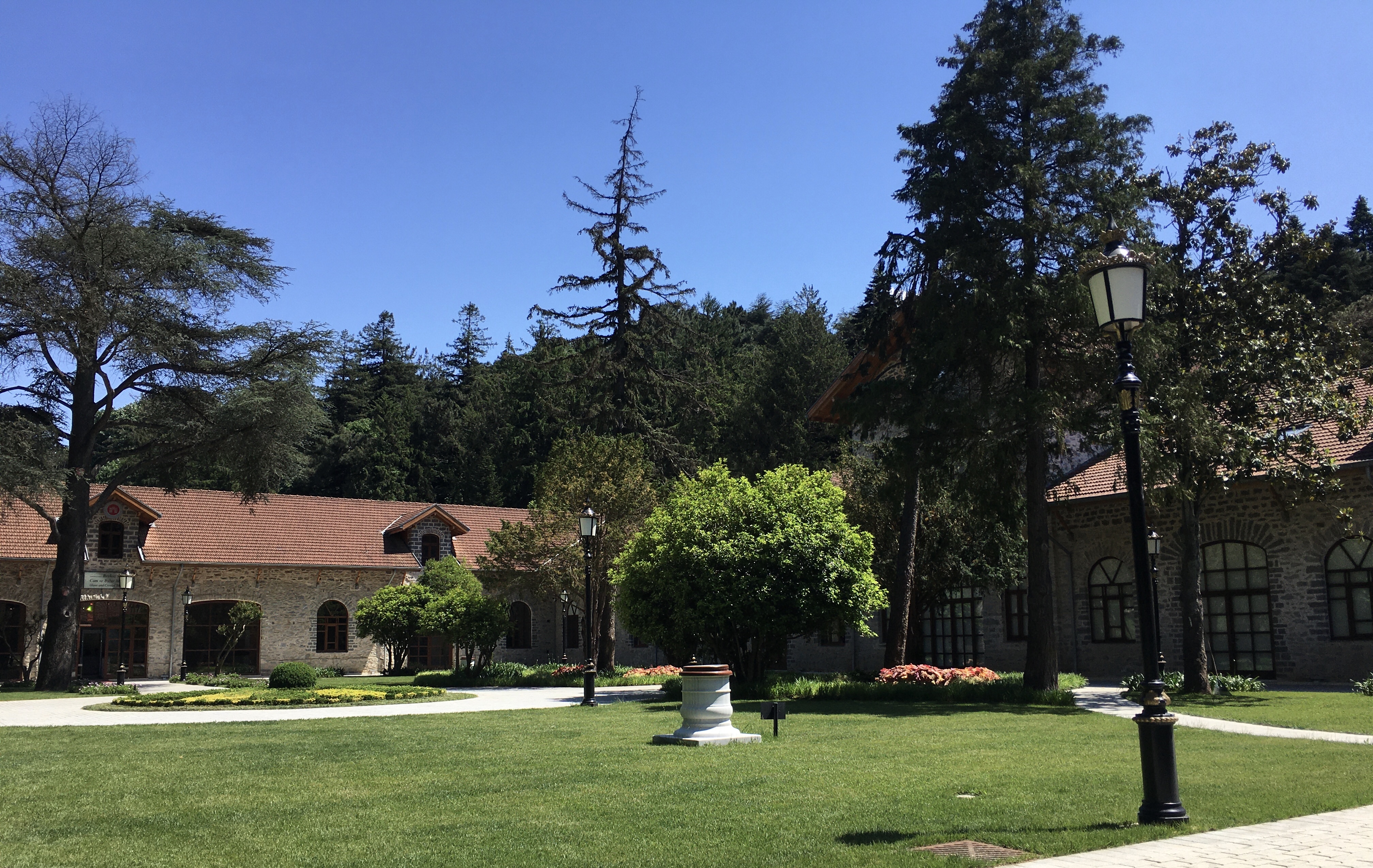
Officially recorded glass production in the Ottoman empire goes back to the 16th century. Detailed ledgers that were kept during the construction (1550-1557) of the Süleymaniye Mosque reveal that 1436 glass craftsmen were employed for the site at the time. During the Ottoman era, glassware production was organised under guilds, as was the case for other crafts. This means that it was closely monitored and regulated by the state. Production locations were designated according to the nature of the production and the dangers that it imposed. Glass production was therefore allowed only in areas that were far away from the city centre. For example, places such Bakırköy and Eğrikapı (meaning Crooked Gate in Turkish) were chosen to eliminate the danger of fire inside the city (where most houses were wooden) and the easy accessibility of raw materials. During Sultan Mustafa III’s (r. 1757-1774) reign, glassware producers around Eğrikapı were relocated to the Palace of Porphyrogenitus (Tekfur Palace).
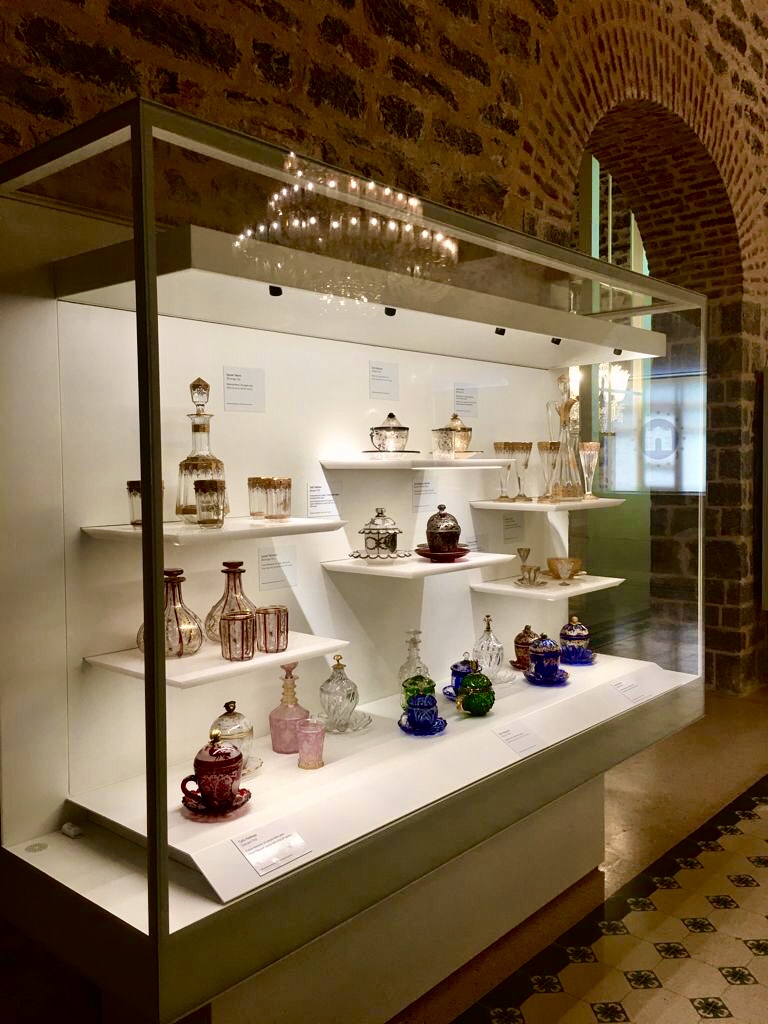
Glassware production in Beykoz was initiated by Sultan Selim III (r. 1789-1807). Like his father (Sultan Mustafa III), Selim III was aware of the need to industrialise the traditional lines of production in order to catch up with the Western rivals of the empire. Glassware production was one of his areas of interest in this endeavour. It is said that, he sent a Rumi (Mevlevi) dervish by the name of Mehmet Dede to Venice to learn the latest developments in glass production. The dervish set up a glass factory in Beykoz upon his return. In time, the products produced in Beykoz became distinct in style and were referred to as Beykoz Glass. The designs and decorations of traditional Beykoz Glassware that allude to Rumi symbols are said to be due to both the Rumi founder of the initial factory and Sultan Selim III who himself was a Rumi believer.
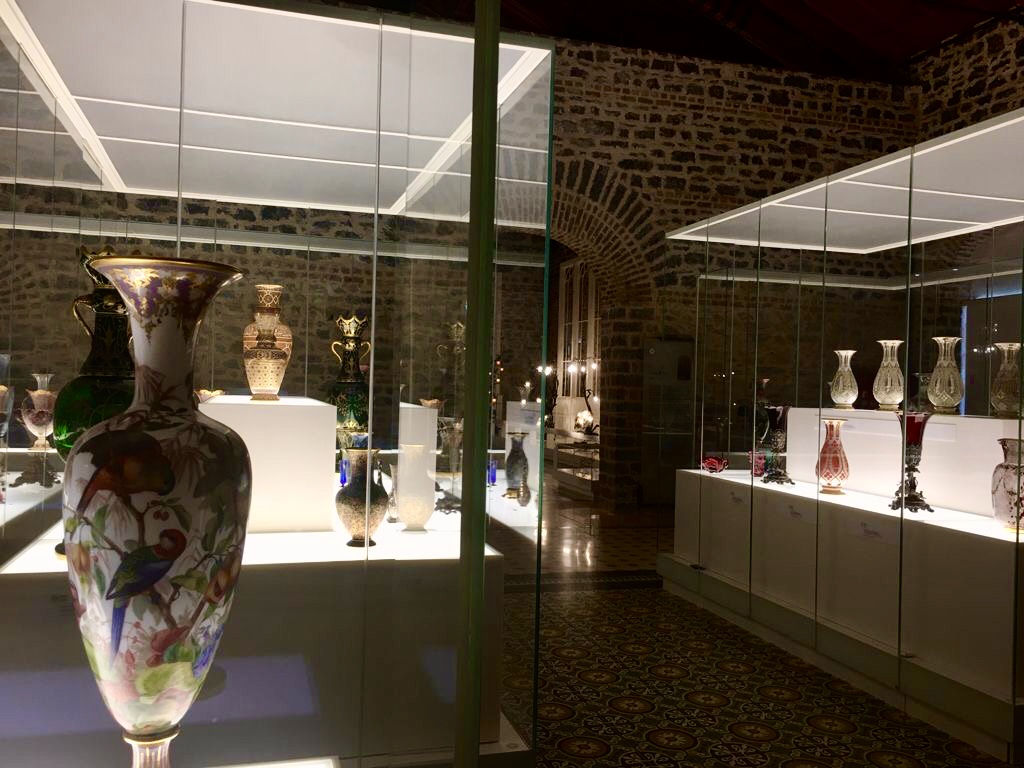
In 1846, another factory by the name of Imperial Glass and Crystal Factory (Billur ve Cam Fabrika-i Hümayunu) was founded in Beykoz by Ahmet Fethi Pasha. The factory’s main goal was to supply the needs of the Ottoman palace. However, goods were also produced for ordinary households. On the other hand, the palace did not confine itself to the products of the factory. High quality glassware and porcelain products were imported as well. Some famous European companies customised their products with the specific insignia of the ruling Sultan and decorations that appealed to the taste of the imperial family.
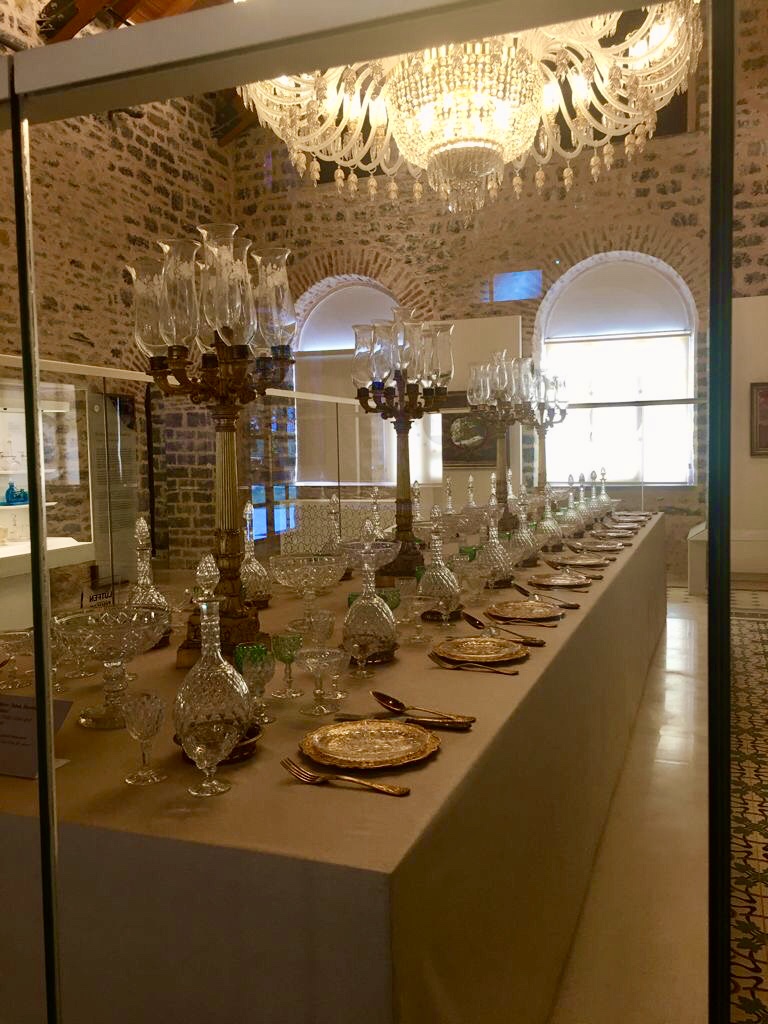
Glass production in the empire was not confined to the above-mentioned factory. In 1851, a fair by the name of “Great Exhibition of the Works of Industry of All Nations” was organised in London. Seven hundred producers, including the Beykoz Imperial Glass Factory, from across the Ottoman realm participated in this organisation which was open for six months. The Ottoman glassware producers won numerous medals in this event.
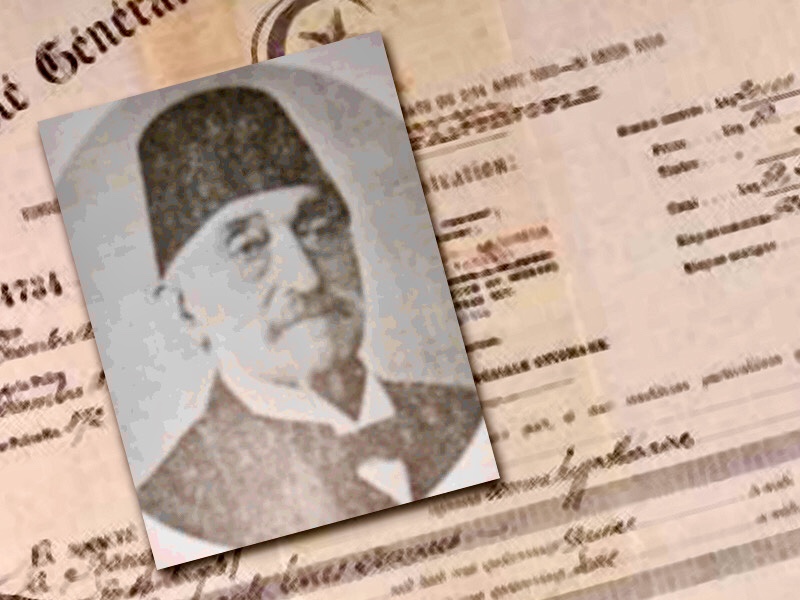
The Beykoz Glass and Crystal Museum opened its doors in April 2021, at a historical building in Beykoz. The building, which was renovated in three years, was originally the stables of the great mansion of Abraham Pasha (1833-1918), an extremely rich Ottoman dignitary of Armenian origin. He was born and educated in Egypt. Like his father, he worked for the Khedive of Egypt, Ismail Pasha. He earned a great fortune during the construction of the Suez Canal which was completed in 1869. Taking an active part in the relations of the Khedive with the Ottoman Empire, in time he befriended Sultan Abdülaziz (r. 1861-1876) who honoured him with the title of Pasha and made him a vizier. In return, Abraham Pasha gave the Sultan a backgammon set made of ivory, decorated with emeralds and rubies, with a pair of diamond dice. It is said that Abraham Pasha acquired the majority of his immense lands by means of the backgammon games he played with the Sultan. We do not know if this is true but we do know that his lands, farms and estates stretched to the coasts of the Black Sea on both sides of the Bosphorus.
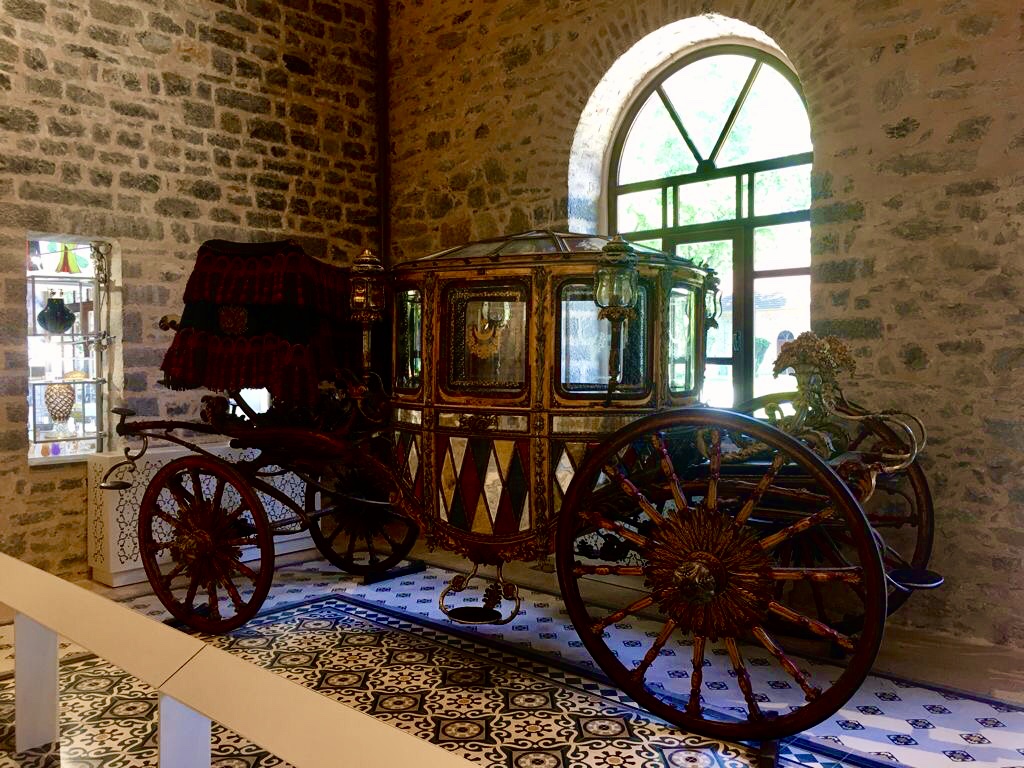
Lelorieux, Paris, France, 19th century
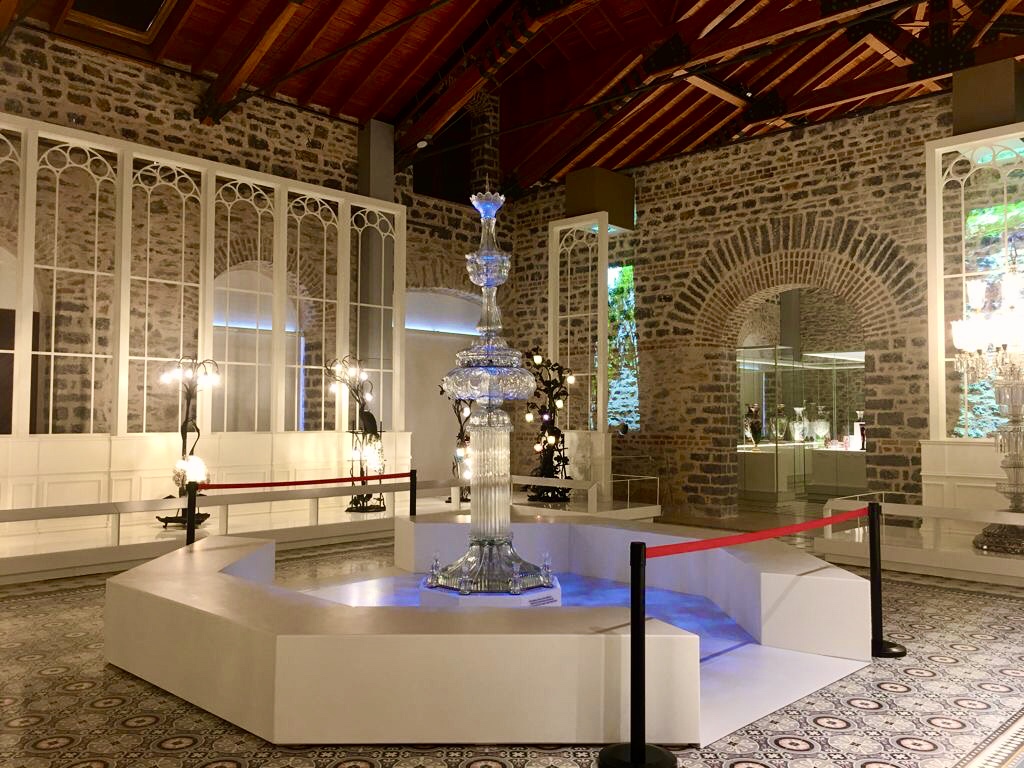
Abraham Pasha reserved 105 acres of his lands overlooking the Bosphorus in Beykoz for his personal use. He built a palace like white mansion there in addition to the smaller kiosks, pools, artificial waterfalls, bird houses and stables. He employed French landscape designers and architects and had rare plants and trees planted on the premises. The birch trees that are in the park are cited as the most precious in Turkey. There were also promenade routes, two caves, hunting grounds and water canals on the grounds. This beautiful grove in Beykoz is still called by his name (Abraham Pasha or Beykoz Grove) and it is open to the public. However, in time, part of the land was cut off by the public road currently running through Beykoz. The buildings that were later built along the road and in the vicinity further ruined the original landscape. As a result, the museum and its surrounding territory is today disjoint from the Abraham Pasha Woods.
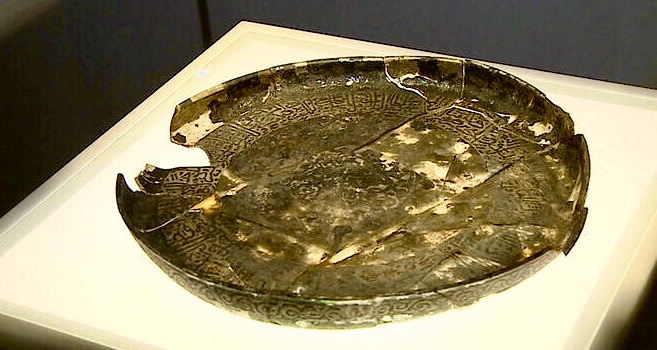
Source: www.yenisafak.com.tr
Nothing remains of the original mansion but one can imagine its grandeur by the size of the stables which now houses the Beykoz Glass and Crystal Museum. Currently, the museum is inside of an approximately 3000 square metres building which is organised in 12 thematic sections for the 1500 artefacts that are on display. The collection is not confined to the Ottoman era. Among the precious items such as Mamluk oil lamps and European artefacts there is a special piece that is amazing. This is the Kubâdâbâd plate which bares the name of Alaattin Keykubat (r.1220-1257), Sultan of the Anatolian Seljuk Sultanate. It is believed that the plate was produced some time between 1237-1246.
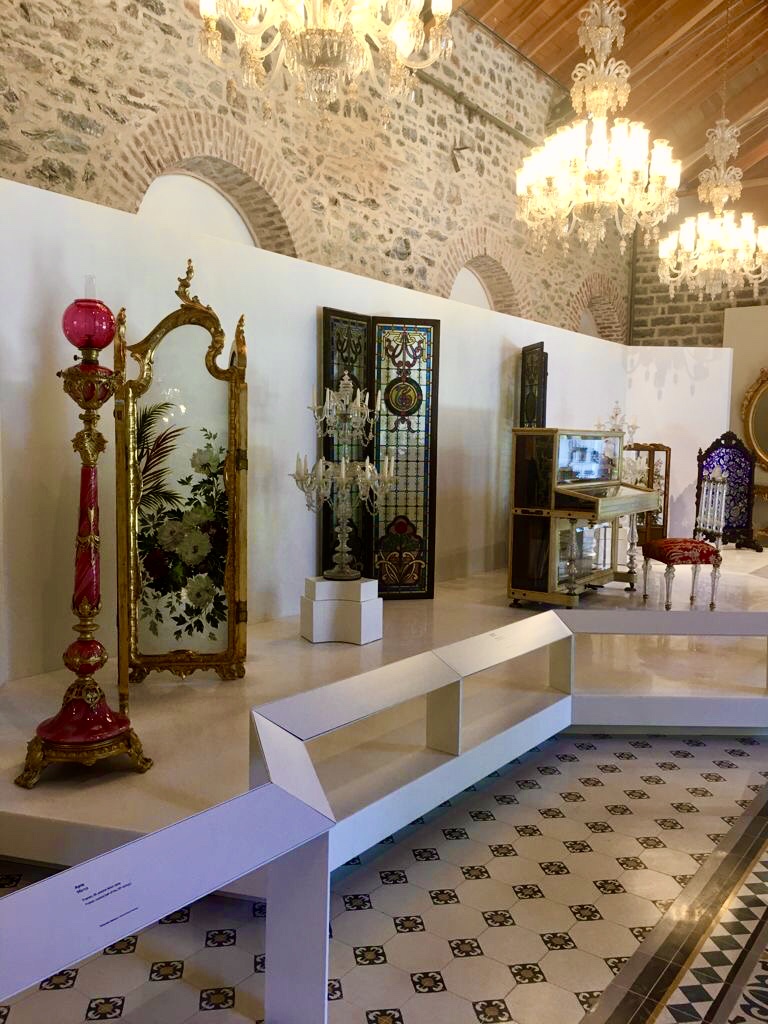
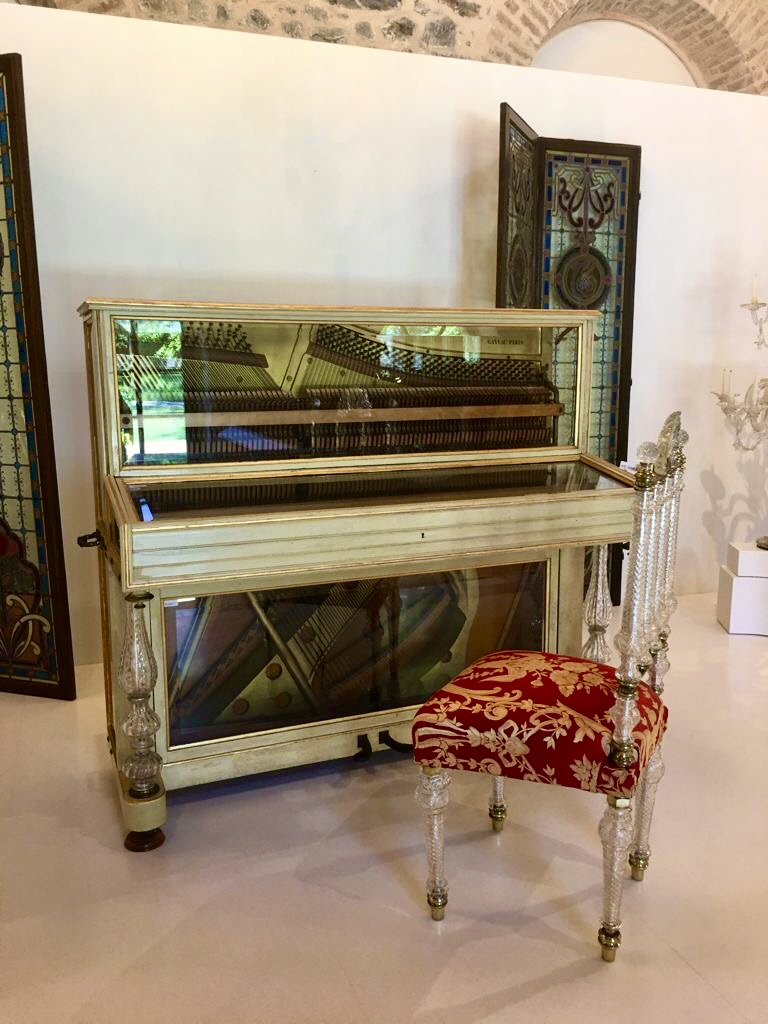
Crystal Chair, Kamenicky Senov, Bohemia, 19th century
Having come this far from the city centre, you can continue your excursion with the Beykoz Mecidiye Pavilion, an impressive nineteenth century structure in the vicinity which will be the subject of my following post.

[…] several years (2010-2016) after which the pavilion opened its doors as a museum. Together with the Beykoz Glass and Crystal Museum, the Mecidiye Pavilion is a pleasant stop during an excursion to the Beykoz district of […]